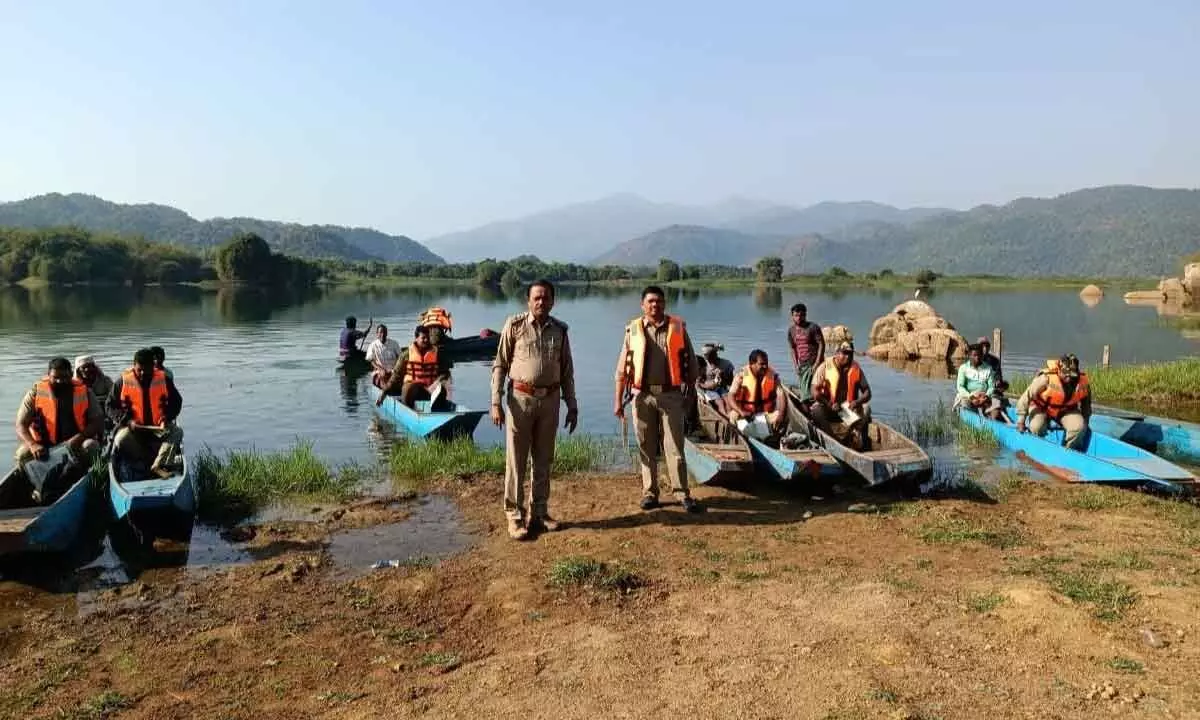Number of muggers increasing gradually in Ghodahada dam

The number of muggers, an endangered crocodile species, is gradually increasing in Ghodahada irrigation reservoir in Ganjam district.
Berhampur: The number of muggers, an endangered crocodile species, is gradually increasing in Ghodahada irrigation reservoir in Ganjam district. This was stated by Divisional Forest Officer (DFO), Berhampur, Amlan Nayak after the 3-day census of the mugger, also known as marsh crocodile, in 5 sq km reservoir area, conducted by Berhampur forest division from January 6 to 8.
The estimated population of the species, which was 76 last year (58 inside the dam and 18 migrated to nearby ponds), increased to 81 this year (64 inside the dam and 17 migrated to nearby ponds), said the DFO. Staffers were engaged to enumerate the water animal. The entire reservoir was divided into 10 segments and each segment was looked after by one staff member with a country boat. Another 10 staffers were deployed in 10 adjoining ponds. The census was conducted by the direct sight method from 6 am to 4 pm, said the DFO.
"Mugger is one of the three crocodile species found in the State. The other species found in the State are 'gharial,' mainly in Satkosia, and 'baula,' mainly in Bhitarkanika. Ghodahada reservoir is considered as one of the potential habitats for the muggers in the State," he said.
The DFO said the main focus of the census was to improve the habitat of mugger by involving local fishermen and providing them incentives under the United Nations Development Project (UNDP). "We have formed cluster committees and are sensitising the fishermen regularly," he said.
The mugger (Crocodylus palustris) has the widest distributional range compared to any of the Asian freshwater crocodilian species
Mugger is not aggressive and never harms fishermen of the adjoining seven villages. The fishermen catch around 150 kg fishes from the reservoir every day without any fear. It is for this reason that the villagers protect and nourish these crocodiles. There is no conflict between the man and the animal in Ghodahada irrigation reservoir.
The census of mugger was conducted for the first time in 2008 after the Ghodahada irrigation reservoir was constructed in 1975. Locals say muggers were found in the large pond of the temple before 2006 and these crocodiles migrated to the reservoir area after 2006. The total area of the reservoir is 4.15 sq km during monsoon and 3.43 sq km during summer, sources said.
During the British era, the Zamindar families of the area had kept a few muggers in a large tank adjacent to the Ujaleswar temple campus near Ghodahada reservoir. According to forest officials, during rainy season, some of these muggers may have migrated to the large reservoir where they bred and increased their population during the past few decades.
This reservoir, located adjoining Lakhari valley sanctuary and a part of the Eastern Ghats near the border of Ganjam and Gajapati districts, was part of a medium irrigation project on the Ghodahada river. The Ghodahada river is a tributary of the Rushikulya river. The construction of the project took around 15 years and was completed in 1975, sources said.

















